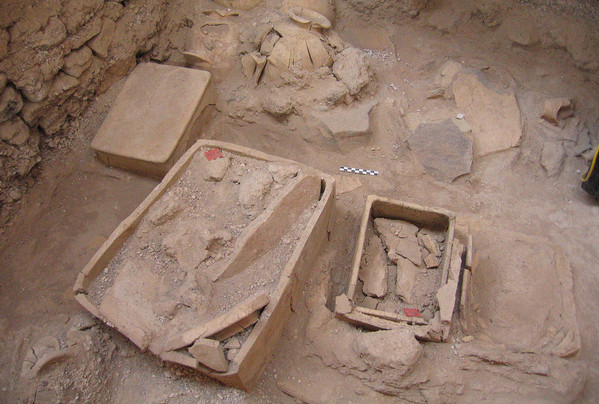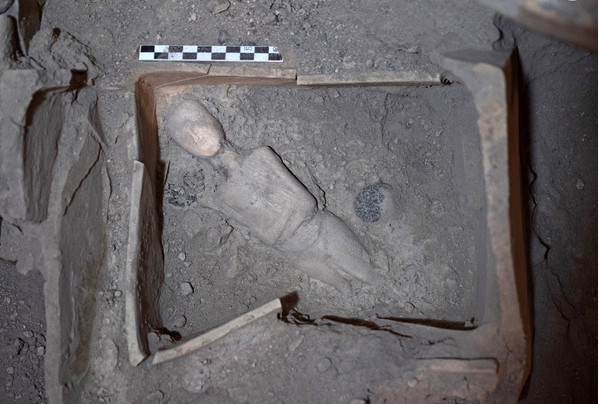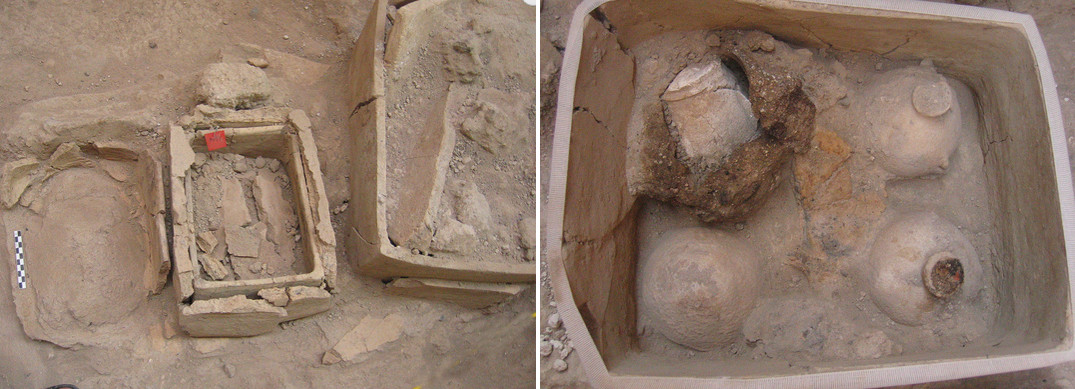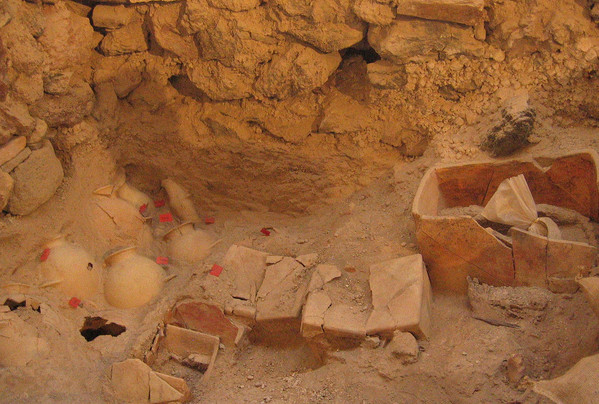Santorini island news
New finds at the Akrotiri excavations on Santorini
New important finds have come to light during the on going excavations at the prehistoric settlement of Akrotiri on Santorini, according to the Greek Ministry of Culture and Sports.
In the interior of an important building, probably a public one, known by the conventional name “House of Desks”, near the spot where the exquisite golden ibex, exhibited at the Museum of Prehistoric Thira, was found in 1999, this year, in chronological sequence, were found, initially amphoras, followed by small rectangular clay chests, (see pictures above and below).

Following the gradual revealing and cleaning of the small chest in the northwest corner of the space, a marble protocycladic female figure was found placed diagonally along the bottom of the vessel (see picture below).
From the group of chests in the southeast corner of the space, three were uncovered, of which the two smallest were filled with egg-shaped masses of clay while the largest contained two small marble protocycladic collared jars, placed upside down, a marble vial and an alabaster vase (see picture below).

The ongoing excavation at Akrotiri is gradually unveiling an area of ritual acts, very close to Xeste 3, an important public building decorated with rich murals at the southern edge of the settlement. The finds are undoubtedly linked to the views and beliefs of Thiran society and provide a stimulus for a new interpretive drive on fundamental questions about the ideology and possibly the religion of prehistoric Aegean society.
The excavations, which are taking place under the auspices of the Archaeological Society of Athens, are directed by Professor Christos Dοumas, and sponsored by the Kaspersky Lab.
About Santorini History
The human presence on the island seems to have existed since the middle of the 3rd millennium B.C. The excavation at Akrotiri (photo below) has confirmed that man’s activity on the island continues until the eruption of the volcano in around 1600 B.C., which entirely buried the island beneath very thick layers of pozzuolana. All traces of human activity vanished from the island until the end of the 13th century B.C. Read more here

